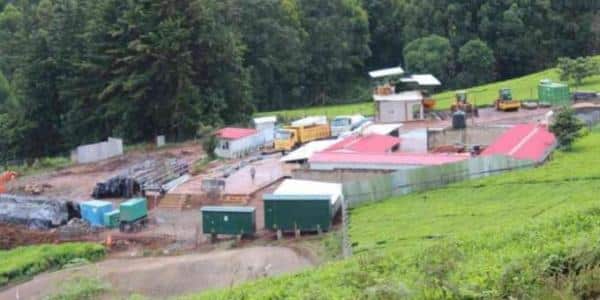
Controversy has continued to rise over the Northern Collector Tunnel Project in Murang’a County, a project that was introduced in 1998 and approved by M/S Howard Humphreys and Partners Limited – an East African company that conducts feasibility studies on structural and engineering projects.
The sole aim of the project was to solve the problem of water shortage in Nairobi County by tapping water from other sources apart from the Ndakaini dam.
The tunnels, which critics termed as “tunnels of death”, were set to collect water from rivers Maragua, Irati and Gikigie but were later extended to tap water from rivers South Mathioya, Hembe, Githugi and North Mathioya which are tributaries of the Tana River.
According to the feasibility report which approved the plan, Phase 1 of the project was to be implemented by 2010 but this never happened due to lack of funds.
In 2012, however, Athi Water Services Board validated the 1998 report and further recommended implementation of the Northern Collector Tunnel project.
On May 19, 2012, then-Prime Minister Raila Odinga launched the project and announced that Phase 1 and 2 would cost Sh25 Billion which would be funded by the World Bank.
“Phase one and two of this project will cost Sh25 billion. The government has now embarked on bold steps to develop water sources that can meet the needs of the city and the satellite towns up to the year 2035,” Odinga stated during the launch.
Four years later, on Monday, October 10, 2016, Raila came out guns blazing, raising a number of issues on the implementation of the project by the Jubilee government.
Odinga claimed the project would turn Murang’a, Garissa, Ukambani and Tana River regions into a desert due to the secrecy in its design.
He also pointed out the following issues:
1. The participation of the public was limited to Members of the Murang’a County Assembly (MCAs) and individuals who rely on Tana river were never consulted.
2. The project was designed, commissioned and construction commenced before an Environmental Impact Assessment report was prepared and before a license was issued by the National Environment Management Authority (NEMA).
3. The tunnels that were dug would tap water from the main source – Tana River – instead of the overflows which could lead to drying of streams and rivers since they could be up to 250 Meters deep.
After the government was put on the defensive, Water Cabinet Secretary Eugene Wamalwa swiftly came out to address the three issues raised by Odinga and dispell any cause for alarm over the implementation of the project.
The CS refuted claims that the project would lead to desertification in some parts of Kenya and stated that the dam was built in such a way that water enters the tunnel after the overflow downstream has been released.
Secondly, Wamalwa seemingly justified the commencement of the project in September 2014 and payment of a deposit of Sh1.3 Billion before an Environmental Impact Assessment by NEMA was completed. The assessment report was availed in February 2015.
Wamalwa defended the project stating that implementation and assessment could happen at the same time, adding that the World Bank had already approved the project and availed the funds.
Questioned on why the County Government of Murang’a rejected the project and warned of negative impact to the environment, the CS stated that the locals were concerned they would not benefit from the project but the issue was addressed.
Wamalwa stated that the tunnels would tap water from the flood flow but not the source – Tana River. He added that when the streams were low, water would not go to the tunnels.
The CS stated that Murang’a MCAs had approved the project after all concerns raised in the previous report which they had rejected, were addressed.
Meanwhile, experts who spoke on the matter appeared to support Odinga’s claims.
According to a report by MCAs in Murang’a, Engineers and Water Services Regulatory Board warned that the tunnels could divert more than 97% of the river flow that could contribute to drying of the rivers.
The bone of contention was also how the project would benefit residents of Murang’a County considering it was meant to help residents of the City.
On Wednesday, Murang’a MCAs vowed to move a motion in the Assembly to stop the construction, claiming there were no clear plans on how the tunnels were being dug.
Locals also complained that they were neither engaged during the establishment of the project nor were they getting jobs in the implementation of the project.
Full Details on the Tunnels of Death Project in Murang’a









